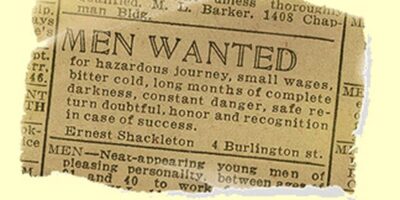By Kristen Hackett and Ryan Donovan
The conversation below is based on our visits to each other’s classes, which was facilitated by the Classroom Visit Exchange program, part of the TLC’s Open Teaching Initiative.
Breaking Down the Binaries
Kristen: At the core of my teaching philosophy is a critical pedagogical approach that understands the classroom as a space in which to inform students about their world/city and prepare and encourage them to play an active role in shaping that world/city. This involves breaking down the hierarchies embedded in the structure of the classroom—between faculty and students, among students themselves, and between ‘course material’ and ‘the real world’—and situating our class as a community of learners in which a diversity of backgrounds and opinions is celebrated as wef analyze the world around us.
Ryan: Like you, Kristen, I’m concerned with breaking down the false binary between the ‘real world’ and the classroom. I am invested in creating the classroom as a place where skills grow and students have the chance to practice these skills. I aim to make my pedagogy as transparent as possible, and I am explicit with students about the “why” as much as the “what” of our work together. To this end, I also ask students to invest in thinking about their own learning process and to actively reflect on their learning throughout the course of the semester. I’m a strong supporter of self-assessment as the gateway to deep learning. I start the semester by building a class constitution with the students.
Grounding our Pedagogical Values Through Active Learning
Ryan: I design each class so that there is at least some element of active learning involved. In the session that you visited, for instance, part of the scaffolding of the students’ final speech of the semester was giving an impromptu speech with a topic assigned by me. So I always use active learning as part of a bigger framework that helps build skills that students will ultimately be assessed on.
Kristen: For me, active learning grows out of my critical pedagogical stance, wherein the objective is to encourage students to engage course material in deeper and more expansive ways, and to begin to (re)imagine their position in and disposition towards the world/city. In my classrooms, active learning takes a number of forms. In the past, I have taken my classes on field trips to local museums, encouraged them to attend related events on campus and around the city, discussed current events and weaved my own experiences as a socio-political being in the world into course discussions as a way of encouraging them to reflect on their own positionality relative to course material. Even when I ‘lecture’, as I did on the day you attended, I think of it as ‘guided conversation’ with students where we are actively excavating, deconstructing, and questioning course material relative to our own lives and experiences and knowledge of the world.
Ryan: I was really impressed by the student engagement in your class, especially how they connected the course material to their daily lives. Sometimes I’ll explicitly ask students to do this, but it’s great when it happens organically.
Kristen: I have been very fortunate with my students and the classroom dynamics that characterize my classes this semester. Having taught the past eight semesters, I’ve learned how much these classroom dynamics matter,rendering some tactics of active learning more appropriate (or necessary) than others. For example, this semester, moderating full-class discussions (or ~30 students) works because students are engaging in that classroom structure. In the past, in classes where students are quieter or less apt to speak in such a large group, I have had to work in smaller group work and discussions.
Challenges to Active Learning
Kristen: There are other challenges that can affect how we structure our classrooms and implement active learning techniques. I teach Urban Studies 101: Poverty and Affluence, which, as is the case with most 101 courses, is an important survey that aims to create a foundation of knowledge for (potential) majors/minors in Urban Studies. From the instructor perspective, this generally requires that instructors cover A LOT of material, usually in line with a pre-existing syllabus. In my experience, this can create obstacles to active learning or other types of creative and innovative pedagogical approaches. In part as a work-around, this academic year I am experimenting with digital technologies. Digital tools can allow students to have conversations and raise questions outside of the classroom. Over the last year, students have used the Qwriting platform at Queens College to have peer conversations around course material, lead public discussions through blogging, and are creating digital public education tools as their final projects. Each of these initiatives attempts to engage students as learners and knowers, and to engage them in not just (re)imagining, but moving into the realm of enacting (or actively experimenting with) new ways of being and seeing and knowing and sharing.
Ryan: Yes, I completely agree that finding meaningful ways to incorporate active learning into heavy content courses is a challenge, and one that I struggled with a lot last semester when I was teaching a theatre history course. I felt the pressure to “cover the material,” which came at the expense of more active learning. I think your course website is really great, and is a great addition to the class that extends the conversation and invites participation from students who might not want to speak up in class.
Kristen: Great point, Ryan! Whereas in the classroom, some students can dominate classroom conversations, in the digital space, quieter students are more apt to engage other students ideas, and are asked to lead discussions (through the blogs). As technology evolves, I think it is important to explore the increased capacities they can add to our classrooms. Do you face any particular challenges to taking an active learning approach in your public speaking class at Baruch, particularly given that so much of your class requires that students speak and have a presence in the physical classroom?
Ryan: The challenge for active learning in the public speaking classroom is mainly the students’ fear of public speaking. To work through this, I incorporate multiple low-stakes speaking opportunities into the design of each assessment activity, beginning with asking each student to briefly tell the class what they plan to speak about. But really, it all comes back to the reason that I begin the semester by collaborating on a class constitution: to get students invested and actively taking ownership of their learning and the course, while also advancing equity.
An Interdisciplinary Opportunity for Peer Feedback
Ryan: Learning more about pedagogy is something that I think is neglected in graduate training, so I try to take advantages of opportunities to fix this imbalance. I was attracted by the interdisciplinary nature of the program as well, as this kind of cross-disciplinary connection is another area not given enough attention to in graduate training. I was just hoping, on a basic level, to get a chance to see and hear how someone else approaches this work.
Kristen: I signed up for the class visit exchange because I wanted an opportunity to observe a peer instructor and have them observe me. Though I have taken a class on teaching in the past, and been observed during department evaluations, engaging in a dialogue with a peer about teaching seemed different; more meaningful maybe. When peers come to the table, there is some recognition that you both know some things, and you don’t know other things, and when you leave, you both hope you know more than when you sat down. In my experience, the expected reciprocity of the exchange, wherein each peer is looking to contribute and receive insight creates a more generative conversation: one that is not embedded in the binary of right vs. wrong methods, which have characterized many of my past ‘teaching how to teach’ experiences, but instead feels like a supported exploration and (de)(re)construction of teaching as a personal and shared praxis.
Ryan: Yes, and I think that the peer element definitely matters here. It didn’t feel like a typical observation, where you are being judged by a faculty member you’ve generally never met who may or may not be happy about being there to observe you! It’s been helpful to have the chance to have to reflect on my pedagogy as a result of this experience (hello, statement of teaching philosophy!).
Kristen Hackett is a PhD student in Environmental Psychology at the Graduate Center and part-time faculty in the Urban Studies Department at Queens College.
Ryan Donovan is a PhD candidate in Theatre and Performance at the Graduate Center.









1 Pingback